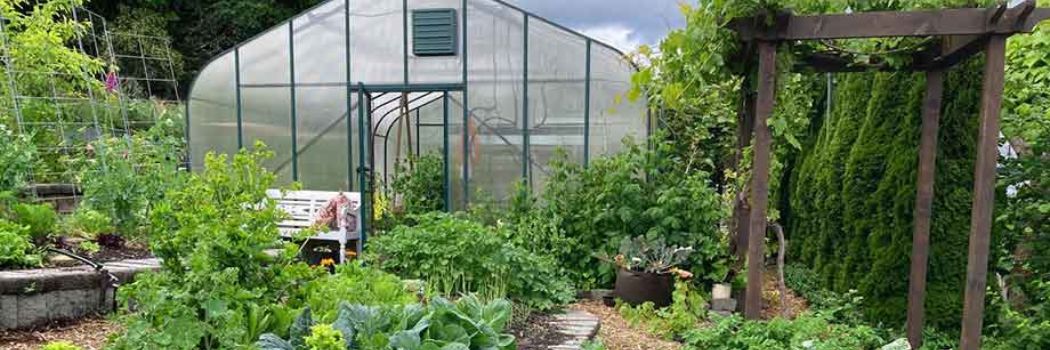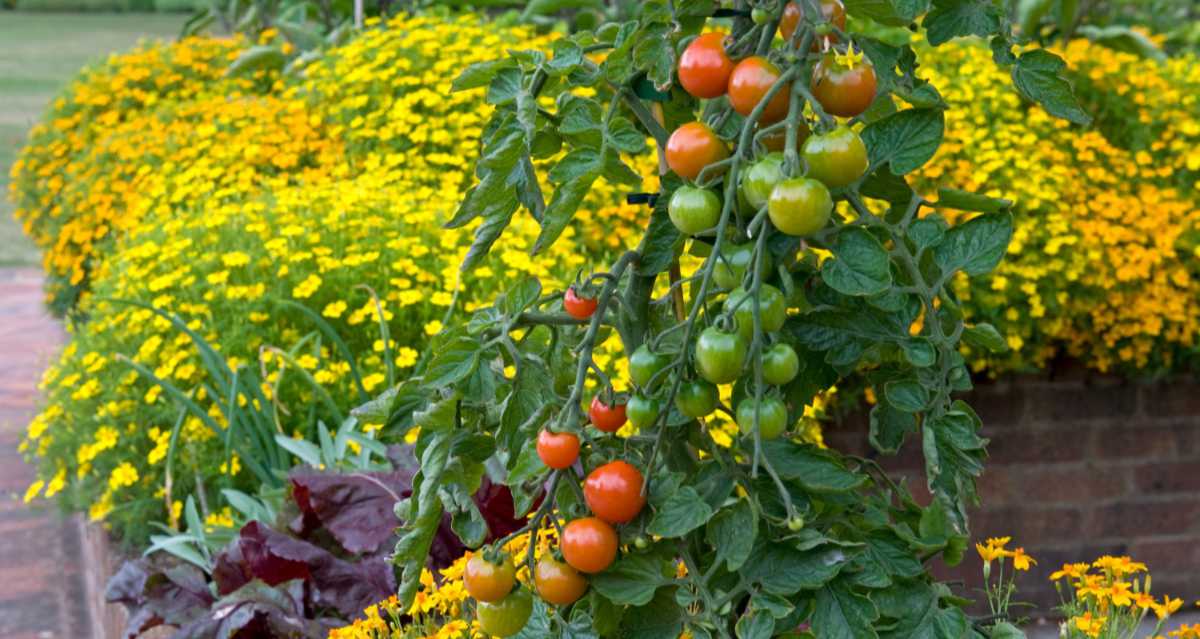The Ultimate Guide To Companion Planting With Nigella
The Ultimate Guide to Companion Planting with Nigella
Nigella damascena, commonly known as love-in-a-mist, is a beautiful and versatile annual plant that can be used in a variety of ways in the garden. It is known for its delicate blue or white flowers, fern-like foliage, and airy seed heads. In addition to its ornamental value, nigella is also a beneficial companion plant for other crops.
In this guide, we will discuss the benefits of companion planting with nigella, as well as some of the best plants to pair it with. We will also provide some tips on how to plant and care for nigella in your garden.
Benefits of Companion Planting with Nigella
There are many benefits to companion planting with nigella. Some of these benefits include:
- Attracting pollinators: Nigella is a magnet for pollinators, such as bees, butterflies, and moths. This is beneficial for your garden because pollinators help to pollinate flowers, which in turn leads to more fruits and vegetables.
- Repelling pests: Nigella has been shown to repel some common garden pests, such as carrot flies, cabbage moths, and aphids. This can help to protect your crops from damage and infestation.
- Improving soil quality: Nigella is a nitrogen-fixing plant, which means that it can help to improve the nitrogen content of your soil. This can benefit other plants in your garden, as nitrogen is an important nutrient for plant growth.
- Disguising crops: Nigella's tall, airy growth can help to disguise crops that are attractive to pests. This can help to protect your crops from being eaten.
Best Plants to Pair with Nigella
There are many different plants that can be paired with nigella. Some of the best pairings include:
- Carrots: Nigella is a good companion plant for carrots because it helps to repel carrot flies.
- Cabbage: Nigella can help to repel cabbage moths and other pests that are attracted to cabbage.
- Tomatoes: Nigella can help to improve the flavor of tomatoes.
- Beans: Nigella can help to improve the nitrogen content of the soil, which can benefit beans.
- Squash: Nigella can help to repel squash bugs.
How to Plant and Care for Nigella
Nigella is a relatively easy plant to grow. It prefers full sun and well-drained soil. Nigella can be started from seed indoors or outdoors. If you are starting seeds indoors, sow them 4-6 weeks before the last frost. If you are starting seeds outdoors, sow them directly in the garden after the last frost.
Nigella seeds will germinate in about 2-3 weeks. Once the seedlings have emerged, thin them to 6-8 inches apart. Nigella does not require a lot of water, but it should be watered regularly during dry periods.
Nigella will bloom in about 6-8 weeks after sowing. The flowers will last for several weeks. Once the flowers have finished blooming, the seed pods will form. The seed pods will eventually dry and split open, releasing the seeds.
Conclusion
Nigella is a beautiful and beneficial plant that can be used in a variety of ways in the garden. It is a good companion plant for many different crops, and it can help to attract pollinators, repel pests, improve soil quality, and disguise crops. Nigella is a relatively easy plant to grow, and it is a great addition to any garden.
Nigella, also known as love-in-a-mist, is a beautiful and easy-to-grow flower that can add a touch of elegance to any garden. But did you know that nigella can also be a valuable companion plant?
Nigella can help to deter pests, attract pollinators, and improve the soil. For example, nigella can repel aphids, cabbage moths, and flea beetles. It can also attract bees, butterflies, and hoverflies, which are all beneficial insects. In addition, nigella's deep roots help to improve the drainage and aeration of the soil.
If you're interested in learning more about nigella companion planting, I recommend visiting Gardenia Inspiration. This website has a wealth of information on the topic, including a list of compatible plants, tips on how to plant nigella with other plants, and more.
FAQ of nigella companion planting
1. What are good companion plants for nigella?
Nigella is a relatively easy-going plant, so it can be companion planted with a wide variety of other plants. Some good companion plants for nigella include:
- Carrots: Nigella can help to deter carrot fly, a common pest of carrots.
- Cucumbers: Nigella can help to attract pollinators, which are important for cucumbers to set fruit.
- Lettuce: Nigella can help to suppress weeds, which can compete with lettuce for water and nutrients.
- Onions: Nigella can help to repel aphids, a common pest of onions.
- Sweet peas: Nigella can help to attract pollinators, which are important for sweet peas to set flowers.
2. What are the benefits of companion planting with nigella?
There are several benefits to companion planting with nigella. These include:
- Improved pollination: Nigella can help to attract pollinators, which are important for many other plants to set fruit or flowers.
- Disease and pest control: Nigella can help to repel or deter pests, such as carrot fly and aphids.
- Weed suppression: Nigella can help to suppress weeds, which can compete with other plants for water and nutrients.
- Improved soil health: Nigella can help to improve soil health by adding organic matter and nitrogen.
3. How do I plant nigella with other plants?
When planting nigella with other plants, it is important to consider the spacing requirements of both plants. Nigella typically needs about 6 inches of space between plants, so you will need to adjust the spacing of the other plants accordingly. You can also plant nigella in between rows of other plants, or in a container garden with other compatible plants.
4. What are some common mistakes to avoid when companion planting with nigella?
Some common mistakes to avoid when companion planting with nigella include:
- Planting nigella too close to other plants: Nigella needs about 6 inches of space between plants, so you should avoid planting it too close to other plants.
- Planting nigella in the wrong location: Nigella prefers full sun, so you should avoid planting it in a shady location.
- Not watering nigella regularly: Nigella needs regular watering, so you should avoid letting the soil dry out completely.
5. Where can I find more information about nigella companion planting?
There are a number of resources available online and in print that can provide more information about nigella companion planting. Some good resources include:
- The Gardener's Chronicle: This website has a section on companion planting that includes information about nigella.
- GrowVeg.com: This website has a guide on how to grow nigella, including information on companion planting.
- The Spruce: This website has an article on how to grow and care for love-in-a-mist, which is another name for nigella.
Image of nigella companion planting
Here are 5 different images of nigella companion planting from Pinterest:
- Nigella with roses: Nigella can be planted with roses to help deter pests. The strong scent of nigella is said to repel aphids, spider mites, and other insects.
- Nigella with lavender: Nigella and lavender are both Mediterranean plants that thrive in full sun. They also have similar flower colors, so they make a beautiful combination in the garden.
- Nigella with carrots: Nigella can be planted with carrots to help improve the flavor of the carrots. The nigella plants help to attract beneficial insects, which help to control pests that can damage carrots.

- Nigella with tomatoes: Nigella can be planted with tomatoes to help deter whiteflies. The strong scent of nigella is said to repel whiteflies, which can be a major pest of tomatoes.

- Nigella with cosmos: Nigella and cosmos are both annual flowers that attract butterflies and other pollinators. They make a beautiful combination in the garden, and they help to improve the pollination of other plants in the area.

Post a Comment for "The Ultimate Guide To Companion Planting With Nigella"